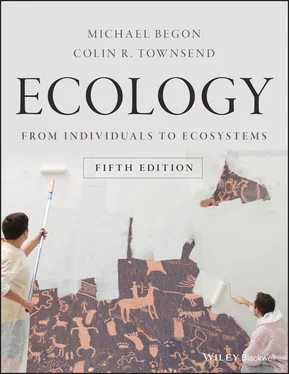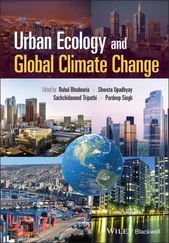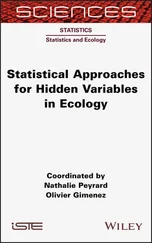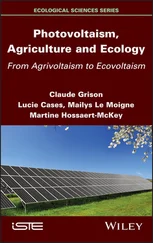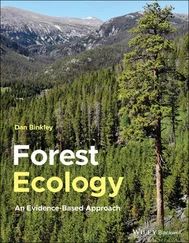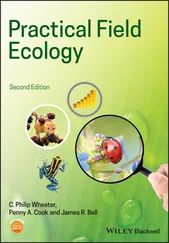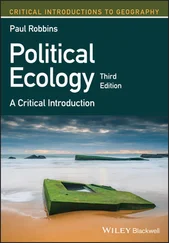high temperature and water loss in terrestrial environments
All terrestrial organisms need to conserve water, and at high temperatures the rate of water loss by evaporation can be lethal, but they are caught between two stools because evaporation is an important means of reducing body temperature. If surfaces are protected from evaporation (e.g. by closing stomata in plants or spiracles in insects) the organisms may be killed by too high a body temperature, but if their surfaces are not protected they may die of desiccation.
Death Valley, California, in the summer, is probably the hottest place on earth in which higher plants make active growth. Air temperatures during the daytime may approach 50°C and soil surface temperatures may be very much higher. The perennial plant, desert honeysweet ( Tidestromia oblongifolia ), grows vigorously in such an environment despite the fact that its leaves are killed if they reach the same temperature as the air. Very rapid transpiration keeps the temperature of the leaves at 40–45°C, and in this range they are capable of extremely rapid photosynthesis (Berry & Björkman, 1980).
Most of the plant species that live in very hot environments suffer severe shortage of water and are therefore unable to use the latent heat of evaporation of water to keep leaf temperatures down. This is especially the case in desert succulents in which water loss is minimised by a low surface to volume ratio and a low frequency of stomata. In such plants the risk of overheating or of damage to photosynthetic machinery may be reduced by spines (which shade the surface of a cactus) (Loik, 2008) or hairs or waxes (which reflect a high proportion of the incident radiation). Nevertheless, such species experience and tolerate temperatures in their tissues of more than 60°C when the air temperature is above 40°C.
fire
Fires are responsible for the highest temperatures that terrestrial organisms face on earth and, before the fire‐raising activities of humans, were caused mainly by lightning strikes. The recurrent risk of fire has shaped the species composition of arid and semiarid woodlands in many parts of the world. All plants are damaged by burning but it is the remarkable powers of regrowth from protected meristems on shoots and seeds that allow a specialised subset of species to recover from damage and form characteristic fire floras (see, for example, Rundel et al ., 2016).
Decomposing organic matter in heaps of farmyard manure, compost heaps and damp hay may reach very high temperatures. Stacks of damp hay are heated to temperatures of 50–60°C by the metabolism of fungi such as Aspergillus fumigatus , carried further to approximately 65°C by other thermophilic fungi such as Mucor pusillus and then a little further by bacteria and archaea. Biological activity stops well short of 100°C but autocombustible products are formed that cause further heating, drive off water and may even result in fire.
high temperature and oxygen supply in aquatic environments
In aquatic environments there is a situation analogous to the interplay between temperature and water supply discussed earlier for terrestrial environments. But in the aquatic case the interplay is between temperature and oxygen supply. At high temperatures, oxygen supply may not be able to keep up with the organism’s metabolic demand for oxygen, such that upper thermal limits occur at temperatures lower that those that denature proteins (the oxygen and capacity‐limited thermal tolerance theory of Pörtner (2001)).
thermal vents
An ecologically very remarkable hot aquatic environment was first described only towards the end of the last century. In 1979, a deep oceanic site was discovered in the eastern Pacific at which fluids at high temperatures (‘smokers’) were vented from the sea floor forming thin‐walled ‘chimneys’ of mineral materials. Since that time many more vent sites have been discovered at mid‐ocean crests in both the Atlantic and Pacific Oceans. They lie 2000–4000 m below sea level at pressures of 200–400 bars (20–40 MPa). The boiling point of water is raised to 370°C at 200 bars and to 404°C at 400 bars. The superheated fluid emerges from the chimneys at temperatures as high as 350°C, and as it cools to the temperature of seawater at about 2°C it provides a continuum of environments at intermediate temperatures.
Environments at such extreme pressures and temperatures are obviously extraordinarily difficult to study in situ and in most respects impossible to maintain in the laboratory. Some thermophilic bacteria collected from vents, such as Pyrococcus furiosus , exhibit optimal growth at 100°C (Zeldes et al ., 2017), but there is circumstantial evidence that some microbial activity occurs at even higher temperatures and may form the energy resource for the warm water communities outside the vents.
There is a rich eukaryotic fauna in the local neighbourhood of vents that is quite atypical of the deep oceans in general. At one vent in Middle Valley, north‐east Pacific, surveyed photographically and by video, at least 55 taxa were documented of which 15 were new or probably new species (Juniper et al ., 1992). There can be few environments in which so complex and specialised a community depends on so localised a special condition. The closest known vents with similar conditions were 2500 km distant. Such communities add a further list to the planet’s record of species richness, and more than 500 new animal species from the world’s thermal vents have been described (Desbruyères et al ., 2006).
2.3.7 Temperature as a stimulus
We have seen that temperature as a condition affects the rate at which organisms develop. It may also act as a stimulus, determining whether or not the organism starts its development at all. For instance, for many species of temperate, arctic and alpine herbs, a period of chilling or freezing (or even of alternating high and low temperatures) is necessary before germination will occur. A cold experience (physiological evidence that winter has passed) is required before the plant can start on its cycle of growth and development. Temperature may also interact with other stimuli (e.g. photoperiod) to break dormancy and so time the onset of growth. The seeds of the birch ( Betula pubescens ) require a photoperiodic stimulus (i.e. experience of a particular regime of day length) before they will germinate, but if the seed has been chilled it starts growth without a light stimulus.
2.4 Correlations between temperature and the distribution of plants and animals
2.4.1 Spatial and temporal variations in temperature
Variations in temperature on and within the surface of the earth have a variety of causes: latitudinal, altitudinal, continental, seasonal, diurnal and microclimatic effects and, in soil and water, the effects of depth.
Latitudinal and seasonal variations cannot really be separated. The angle at which the earth is tilted relative to the sun changes with the seasons, and this drives some of the main temperature differentials on the earth’s surface. Superimposed on these broad geographic trends are the influences of altitude and ‘continentality’. There is a drop of 1°C for every 100 m increase in altitude in dry air, and a drop of 0.6°C in moist air. This is the result of the ‘adiabatic’ expansion of air as atmospheric pressure falls with increasing altitude. The effects of continentality are largely attributable to the different rates of heating and cooling of the land and the sea. The land surface reflects less heat than the water, so the surface warms more quickly, but it also loses heat more quickly. The sea therefore has a moderating, ‘maritime’ effect on the temperatures of coastal regions and especially islands; both daily and seasonal variations in temperature are far less marked than at more inland, continental locations at the same latitude. Moreover, there are comparable effects within landmasses: dry, bare areas like deserts suffer greater daily and seasonal extremes of temperature than do wetter areas like forests. Thus, global maps of temperature zones hide a great deal of local variation.
Читать дальше
